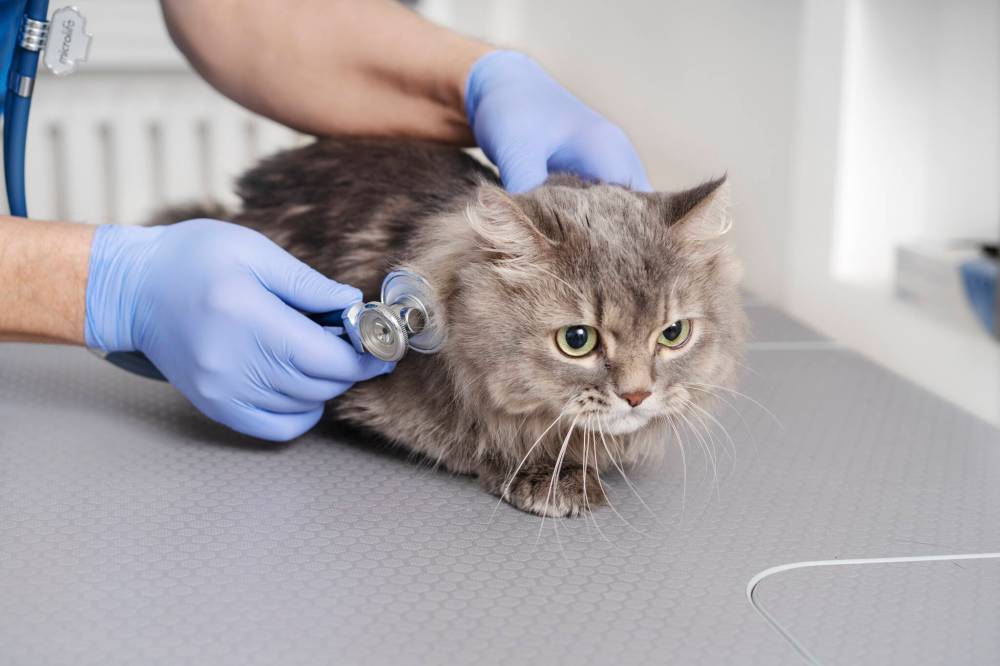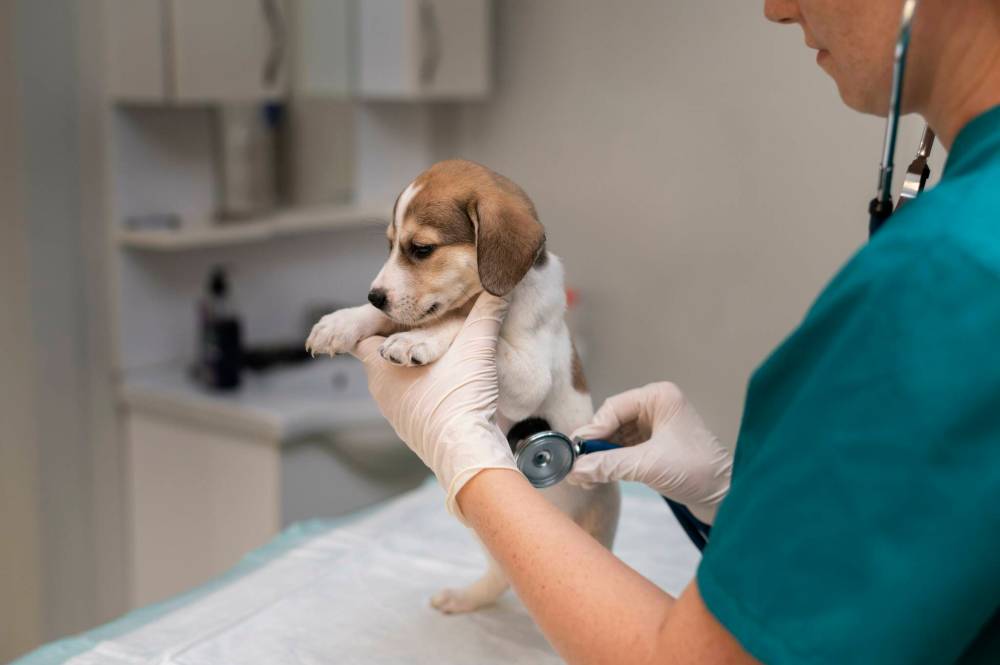Trade war’s furry victims
Retaliatory tariffs on U.S. goods hit pet care, pressuring cash-strapped owners to keep tighter leash on spending
Advertisement
Read this article for free:
or
Already have an account? Log in here »
To continue reading, please subscribe:
Monthly Digital Subscription
$0 for the first 4 weeks*
- Enjoy unlimited reading on winnipegfreepress.com
- Read the E-Edition, our digital replica newspaper
- Access News Break, our award-winning app
- Play interactive puzzles
*No charge for 4 weeks then price increases to the regular rate of $19.00 plus GST every four weeks. Offer available to new and qualified returning subscribers only. Cancel any time.
Monthly Digital Subscription
$4.75/week*
- Enjoy unlimited reading on winnipegfreepress.com
- Read the E-Edition, our digital replica newspaper
- Access News Break, our award-winning app
- Play interactive puzzles
*Billed as $19 plus GST every four weeks. Cancel any time.
To continue reading, please subscribe:
Add Free Press access to your Brandon Sun subscription for only an additional
$1 for the first 4 weeks*
*Your next subscription payment will increase by $1.00 and you will be charged $16.99 plus GST for four weeks. After four weeks, your payment will increase to $23.99 plus GST every four weeks.
Read unlimited articles for free today:
or
Already have an account? Log in here »
In war, collateral damage harming the innocent is among its greatest tragedies.
A trade war may not be a true travesty but it does inflict pain. And it’s often consumers, not the governments lobbing tariffs at each other, taking it on the chin.
That’s true of Canadian tariffs on $30 billion worth of goods from the United States. Those retaliations for U.S. President Donald Trump’s attack on Canada’s economy and, arguably, the nation’s sovereignty, are inflicting collateral damage on Canadian consumers.

Freepik
Some veterinary services have increased as much as 50 per cent in the last year.
Even our furry friends cannot escape the impacts, as pet food and supplies from the U.S. are tariffed. Even more financially ominous are those levies on U.S.-origin veterinary supplies and equipment.
Diagnostic, sterilizing and other equipment made in America are also subject to 25 per cent tariffs, likely increasing the cost of care.
A recent study by Rover — a provider of dog-walking and other pet services — noted some veterinary services have already increased as much as 50 per cent in the last year, without the tariffs.
Rising costs are an issue Toronto-based veterinarian Rebecca Greenstein has seen first-hand at her independently owned clinic — even before tariffs hit.
“Inflation has obviously played a role, but we’re seeing, especially from the Rover survey, increased anxiety over the impact of tariffs.”
Notably, equipment cost increases will push higher the cost of the most financially painful procedures: surgeries.
Vet care had been rising across North America before tariffs not only because of post-COVID-19 pandemic, demand-induced inflation. Private equity investment — capitalists buying independent vet clinics — has driven costs higher, too, as noted in one recent CBC investigative report.
Greenstein’s clinic is independently owned and she notes having more wiggle room to keep costs down by absorbing them as much as possible rather than passing them onto owners.
But private equity or independently owned, absorbing a 25 per cent price jump is challenging. It’s likely Canadian pet owners will feel the brunt of it.
The Rover study bears this out with 63 per cent of respondents admitting pet costs have weighed on their budget recently. Rover’s 2025 Cost of Pet Parenthood Report estimates the price tag of bringing home a puppy has gone up 17 per cent this year, with upfront costs ranging from $1,750 to nearly $4,700.
Greenstein adds many surgeries today cost more than $10,000, easily liquidating most folks’ emergency funds.
Given the high cost, an ounce of prevention is often worth several thousands dollars of acute care, she adds.
“When a pet becomes so sick we have no choice but to hospitalize the animal, run a lot of diagnostics and perform life-saving procedures, the cost goes up tremendously,” Greenstein notes. “Yet often had the pet owner brought their pet to us earlier,” care likely would have been less invasive and costly.
All of this speaks to the need to consider expenses more before getting a pet, says Anne Arbour, director of partnerships and education at Credit Counselling Society in Toronto. “Pets are an emotional decision, so people don’t often think about the impact it can have on their finances.”
Budgeting for those costs is absolutely something prospective owners be doing, she adds. Otherwise, the risks of difficult choices — emotional and economic — at some juncture increase.
Local animal shelters see the outcomes of poorly planned pet choices almost daily.
“There are requests multiple times a week and many are because people can’t afford their pets,” says Chelsey Hayden, director with Tails of Freedom Rescue, a no-kill animal shelter in Winnipeg.
“The main thing is they (owners) can’t afford to get them (their pets) spayed or neutered or they can’t afford to buy food anymore.”

Freepik
She adds the cost of spay/neuter procedures have increased, with many people calling the shelter surprised to see estimates from a vet running more than $400 to spay a cat. The cost for a dog is even higher, Hayden notes.
Add in vaccinations and deworming, “and sometimes you’re looking at a $600 bill.”
These high costs can lead to pet abandonment for cash-crunched owners, Hayden says. In turn, they don’t spay or neuter, and the female cat yowls every time it goes into heat and unfixed males can spray, marking their territory (in the house) with pungent urine.
“So we end up with people calling, ‘I don’t want this cat anymore; either take it today, or I am throwing it outside.’”
That makes the overall problem of stray animals worse. They tend to reproduce quickly, making more strays.
Tails of Freedom is one of many shelters in the Manitoba capital. It alone takes in more than 500 animals (mostly cats) every year, barely making a dent in demand for its services.
Given the outcomes, Hayden, too, recommends would-be owners truly consider costs, especially when it comes to the so-called free kitten.
It is anything but, if they want to provide proper care.
Households thinking of taking on a pet do have lower-cost alternatives. That includes fostering for a local shelter, whereby an animal stays with them until adopted.
“I always suggest fostering because it costs nothing,” Hayden says. “We cover all the vetting, food and supplies and you really just get to enjoy the time with the animal.”
Of course, the downside is as a foster parent, you may fall in love with the animal.
“But at least you can adopt with all the vetting (spay/neuter, vaccines, etc.) complete,” she says. That said, pet adoption does involve fees of a few hundred dollars, though typically much less than the Rover study’s estimate.
“It is very hard to let them (foster animals) go,” Hayden says. “But it would be harder to turn your back on them knowing they might never find a home.”
Joel Schlesinger is a Winnipeg-based freelance journalist
joelschles@gmail.com


